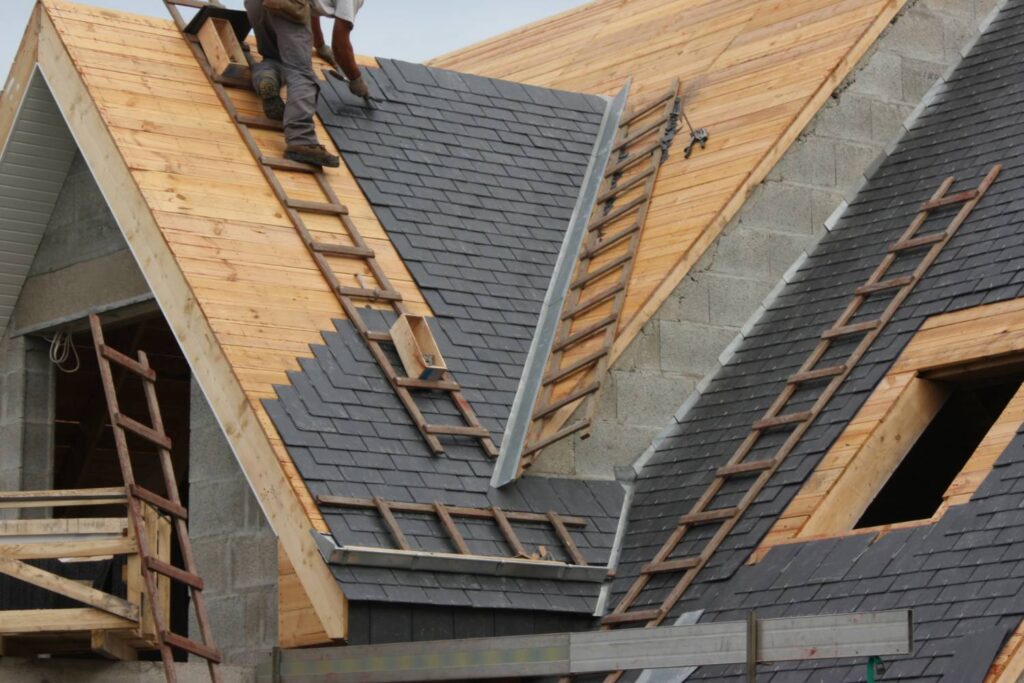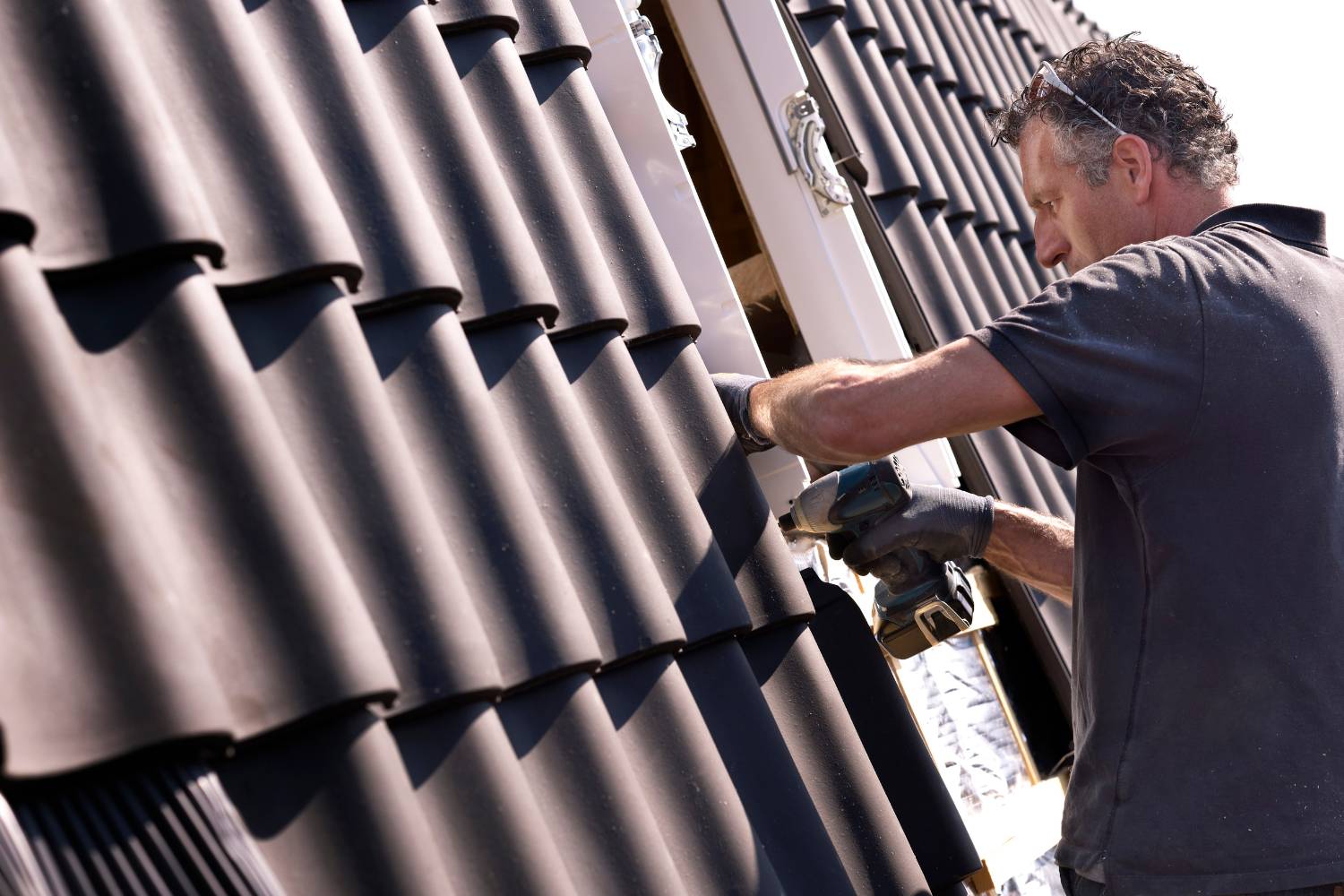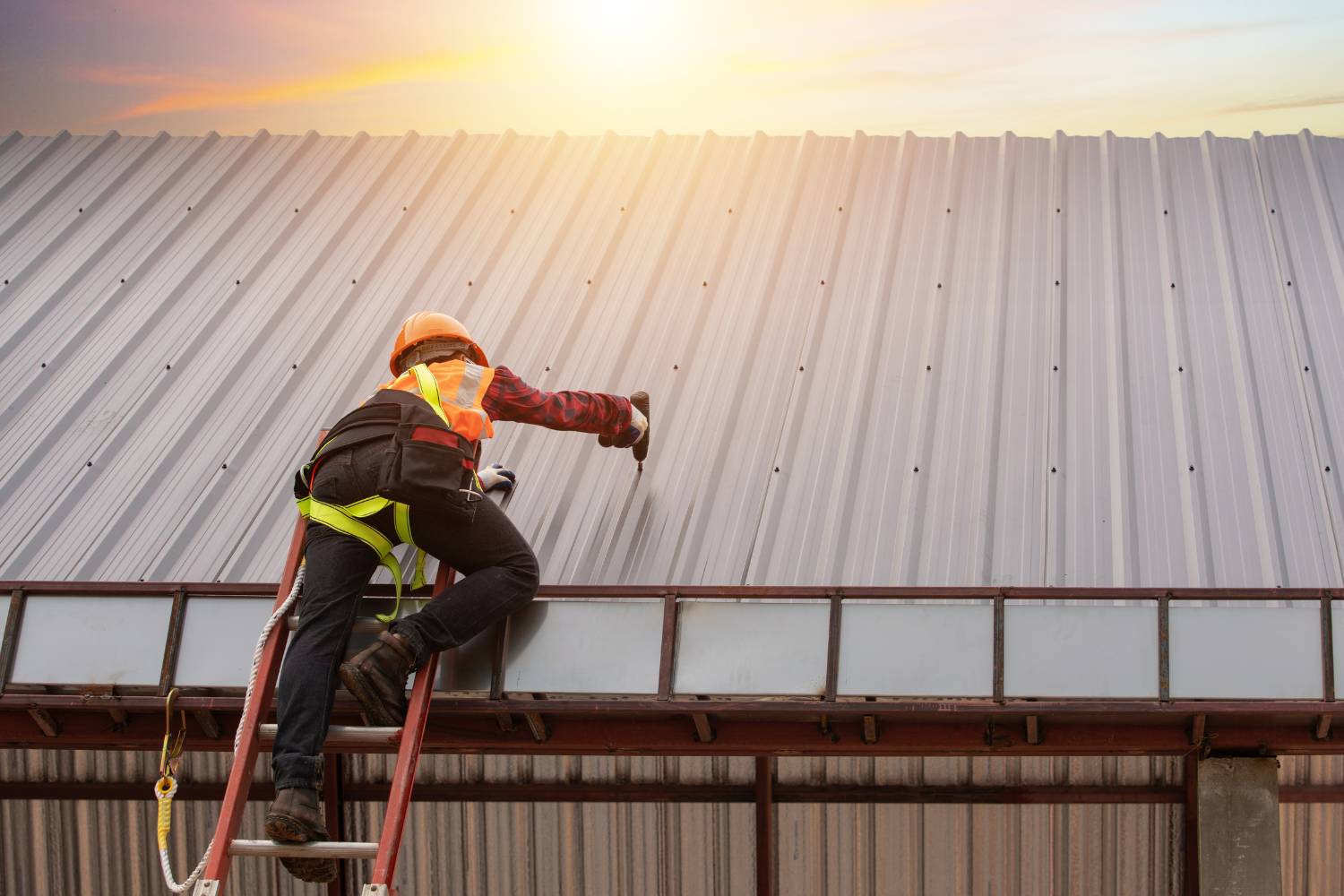Roof restoration is a crucial process that not only enhances the longevity and functionality of a roof but also significantly improves energy efficiency.
By addressing damages, upgrading materials, and implementing modern roofing techniques, roof restoration can lead to substantial energy savings and environmental benefits.
This blog explores the various ways in which roof restoration contributes to energy efficiency, drawing insights from multiple sources.
How Does Roof Restoration Improve Energy Efficiency?
Roof restoration is a crucial process that not only enhances the longevity and functionality of a roof but also significantly improves energy efficiency. By addressing damages, upgrading materials, and implementing modern roofing techniques, roof restoration can lead to substantial energy savings and environmental benefits. This blog explores the various ways in which roof restoration contributes to energy efficiency, drawing insights from multiple sources.
Improved Insulation
Adding insulation during the roof restoration process helps maintain the building's internal temperature. Insulation keeps heat inside during winter and prevents heat from entering during summer, reducing the need for excessive heating and cooling.
Leak Prevention
Repairing leaks is a vital aspect of roof restoration. Leaks allow external air to enter and conditioned air to escape, leading to increased energy consumption to maintain indoor temperatures. Fixing leaks ensures better temperature control and less strain on HVAC systems.
Use Of Energy-Efficient Materials
Modern roof restoration often involves the use of energy-efficient materials such as metal roofing, solar shingles, and green roofs. These materials are designed to reflect more sunlight and absorb less heat, keeping buildings cooler and reducing air conditioning costs.
Reflective Coatings
Applying reflective coatings to the roof surface can significantly decrease heat absorption. Reflective coatings bounce sunlight away, lowering the roof temperature and, consequently, the indoor temperature, leading to reduced energy use for cooling.
Eco-Friendly Roofing Options
Options like green roofs and recycled rubber roofing materials not only improve insulation but also contribute to sustainability. Green roofs provide natural insulation and reduce urban heat island effects, while recycled rubber is durable and environmentally friendly.
Ventilation Improvement
Enhancing roof ventilation during restoration can improve air circulation, reducing the build-up of heat in the attic and upper floors. This helps maintain a more consistent indoor temperature and reduces the workload on heating and cooling systems.
What Are The Best Materials For An Energy-Efficient Roof Restoration?
In today’s world, energy efficiency is a priority for homeowners looking to reduce utility bills and lessen their environmental footprint. An energy-efficient roof is a crucial component in achieving this goal. Here, we explore the best materials for an energy-efficient roof restoration, drawing from various sources to provide a comprehensive guide.
Metal Roofing
- Reflectivity: Metal roofs reflect a significant portion of solar radiant heat, reducing cooling costs by up to 25%.
- Emissivity: They emit absorbed heat efficiently, maintaining stable indoor temperatures.
- Durability: Metal roofs can last between 40 to 70 years, offering a sustainable solution with minimal replacements.
- Environmental Impact: Metal roofs are recyclable, adding to their environmental friendliness.
Tile Roofing
- Thermal Mass: Tile roofs absorb heat during the day and release it slowly, aiding in temperature regulation.
- Air Circulation: The design allows air to circulate under the tiles, preventing excessive heat buildup.
- Material: Often made from clay, slate, or concrete, tiles can be treated to enhance reflectivity.
Asphalt Shingles
- Advancements: Modern asphalt shingles now include solar-reflecting granules, improving their energy efficiency.
- Options: Brands like Owens Corning’s “Cool Roofing Collection” offer shingles with higher reflectance values, available even in darker colours.
- Popularity: Despite being the most common roofing material, energy-efficient asphalt shingles can significantly lower roof surface temperatures.
Slate Shingles
- Longevity: Slate shingles are incredibly durable, often lasting over 100 years.
- Resistance: They withstand extreme weather conditions and are resistant to fire and rot.
- Natural Material: Made from natural rock, slate shingles are an environmentally friendly choice.
Green Roofs
- Cooling Effect: Green roofs help in reducing heating and cooling costs through natural insulation.
- Urban Benefits: Ideal for urban environments, they reduce the urban heat island effect and provide rooftop green spaces.
- Investment: Though more expensive, green roofs offer long-term benefits in energy savings and environmental impact.
Enhancing Existing Roofs
Insulation: Adding insulation to attics and crawl spaces can improve a roof’s energy efficiency.
Sealing: Ensuring windows, doors, and skylights are properly sealed can prevent energy loss.
HVAC Maintenance: Regularly changing HVAC filters and installing programmable thermostats can optimise energy use.
Can Roof Restoration Help Reduce Energy Bills?
Roof restoration is a valuable investment for homeowners and commercial property owners aiming to improve their building’s energy efficiency. By upgrading and repairing the roof, one can significantly lower energy bills. This blog delves into how roof restoration can help reduce energy costs, highlighting key benefits and techniques involved.
Improved Insulation
Adding insulation during roof restoration enhances the building’s ability to maintain internal temperatures. Proper insulation helps keep the heat inside during winter and prevents it from entering during summer, reducing the need for excessive heating and cooling.
Leak Prevention
Repairing leaks is crucial in roof restoration. Leaks allow conditioned air to escape and external air to enter, causing HVAC systems to work harder to maintain comfortable temperatures. Sealing these leaks ensures better temperature regulation and reduces energy consumption.
Energy-Efficient Roofing Materials
Utilising energy-efficient roofing materials, such as reflective shingles and solar tiles, can significantly decrease heat absorption. These materials reflect more sunlight, keeping the building cooler and reducing the need for air conditioning.
Reflective Coatings
Applying reflective coatings to the roof surface can minimise heat absorption. Reflective coatings deflect sunlight, lowering roof temperature and, consequently, the indoor temperature, leading to decreased energy use for cooling.
Ventilation Enhancement
Improving ventilation during roof restoration helps in reducing heat buildup in the attic and upper floors. Proper ventilation allows hot air to escape, maintaining a more consistent indoor temperature and reducing the burden on heating and cooling systems.
Economic And Environmental Benefits
Lower Energy Bills
Roof restoration can lead to substantial reductions in energy bills by improving insulation, preventing leaks, and using reflective materials. These enhancements decrease the energy required to heat and cool the building, translating to significant cost savings.
Extended Roof Lifespan
Restoring a roof rather than replacing it entirely can extend its lifespan. This not only saves money on future repairs and replacements but also reduces the environmental impact associated with the production and transportation of new roofing materials.
Increased Property Value
An energy-efficient roof can boost the property’s market value. Potential buyers are often attracted to homes with lower operational costs and eco-friendly features, making energy-efficient roofing a valuable selling point.
Eligibility for Tax Credits and Incentives
Many sustainable roofing options qualify for tax credits and other incentives. These financial benefits can offset the initial investment in roof restoration, making it a more affordable option for property owners.
Reduced Carbon Footprint
Enhancing the roof’s energy efficiency reduces overall energy consumption, directly lowering carbon emissions. This contributes to a greener environment by minimising the building’s carbon footprint.
What Is The Process Of Roof Restoration For Energy Efficiency?
Roof restoration is essential for maintaining the structural integrity and energy efficiency of your home. It involves repairing, cleaning, and upgrading the roof to enhance its performance, extend its lifespan, and improve energy efficiency. Here's an in-depth look at the roof restoration process, the benefits, and tips for making your roof more energy-efficient.
The Roof Restoration Process
Inspection
- Initial Assessment: The first step in roof restoration is a thorough inspection by a professional roofing contractor. This involves examining the entire roof to identify any damage, such as cracked or missing tiles, leaks, mould, or other issues.
- Evaluation: The contractor evaluates the extent of the damage and determines the best course of action. This assessment helps in planning the restoration process and estimating costs.
Cleaning
- Debris Removal: The roof is cleaned to remove dirt, debris, moss, algae, and any other contaminants. This can be done using high-pressure washing or other cleaning methods.
- Surface Preparation: Cleaning is crucial for ensuring that all subsequent repair and coating processes adhere properly to the roof surface. It also reveals the true condition of the roof, allowing for a more accurate assessment.
Repairs and Tile Replacement
- Damage Repair: Any identified damage is repaired. This may involve fixing cracks, re-bedding, and re-pointing of tiles, or addressing structural issues in the roof framework.
- Tile Replacement: Tiles that are too damaged to repair are replaced with new ones. This step ensures that the roof's integrity is maintained and that it continues to protect the building effectively.
Painting
- Protective Coating: After repairs, the roof is painted with a high-quality, specially formulated paint designed for durability and protection. This paint helps to protect the roof from the elements and enhances its appearance.
- Reflective Pigments: Using paints with reflective pigments can improve the roof's energy efficiency by reflecting more sunlight and reducing heat absorption. This helps in maintaining cooler indoor temperatures.
Resealing
- Sealing: The final step in the restoration process is sealing the roof. This involves applying a sealant that protects the roof from water damage and leaks.
- Durability: Resealing ensures that the roof remains durable and water-resistant, prolonging its life and maintaining its performance.
Tips For Improving Energy Efficiency
Colour Coating
- Light-Coloured Paints: Using light-coloured coatings on the roof can reflect more sunlight and reduce heat absorption. This helps keep the building cooler and reduces the need for air conditioning.
- Reflective Coatings: Specialised reflective coatings can further enhance energy efficiency. These coatings contain pigments that reflect solar radiation, significantly lowering the roof’s surface temperature.
Radiant Barriers
- Heat Reflection: Installing a radiant barrier under the roof deck is an effective way to reduce heat transfer into the attic. This barrier reflects heat away from the living spaces, reducing cooling costs.
- Energy Savings: Radiant barriers are particularly useful in hot climates, where they can help maintain a stable indoor temperature and reduce the energy required for cooling.
Proper Ventilation
- Vent Installation: Proper ventilation is essential for maintaining a cool attic and preventing heat buildup. Adding vents allows for better air circulation, which helps regulate the temperature inside the home.
- Balanced Ventilation: A combination of intake and exhaust vents ensures that fresh air flows into the attic while warm air is expelled, maintaining a balanced and efficient ventilation system.
How To Choose A Contractor For An Energy-Efficient Roof Restoration
Choosing the right contractor for an energy-efficient roof restoration is crucial to ensure the longevity and performance of your roofing system. An energy-efficient roof can significantly reduce your energy bills and environmental footprint. Here are key factors and steps to consider when selecting a contractor for your roof restoration project.
Experience And Expertise
When selecting a contractor, prioritise those with substantial experience in the roofing industry. Contractors with a proven track record in handling various roofing materials and systems, particularly those focused on energy efficiency like metal roofing, reflective coatings, or solar shingles, are ideal. Ensure the contractor has specific expertise in energy-efficient roofing solutions, enabling them to provide the best recommendations and services tailored to your needs.
Licensing And Insurance
It’s essential to verify that the contractor is properly licensed to operate in your state. Licensing ensures that they meet the necessary standards and regulations, which is crucial for maintaining quality and compliance. Additionally, check for comprehensive insurance coverage, including general liability and worker’s compensation. This protects you from any potential liability in case of accidents or damages during the project, providing peace of mind and financial security.
Customer Reviews And Recommendations
Researching online reviews and asking for references from past clients is a critical step. Positive feedback and recommendations from previous clients are strong indicators of a contractor’s reliability and quality of work. Contacting these references to inquire about their experience with the contractor’s communication, timeliness, and the quality of the completed project will give you a clearer picture of what to expect.
Detailed Proposals And Transparency
A reputable contractor should provide a detailed proposal outlining the scope of work, materials to be used, costs, and the project timeline. Ensure there are no hidden fees or surprises by reviewing this proposal thoroughly. Comparing proposals from different contractors helps you understand the variations in cost and scope, allowing you to make an informed decision. Be cautious of significantly low bids, as they may indicate a compromise on quality.
Financial Stability
Assessing the contractor’s financial stability is crucial. Request their financial records or references from suppliers to ensure they have the resources to complete your project without financial difficulties. A financially stable contractor is more likely to complete the project on time and handle any unforeseen challenges effectively.
Conclusion
Roof restoration is not just a means to maintain the structural integrity of your home but also a powerful strategy for enhancing energy efficiency. By improving insulation, preventing leaks, utilising energy-efficient materials, applying reflective coatings, and enhancing ventilation, roof restoration can lead to significant energy savings and environmental benefits.
Choosing the right materials and contractors is essential to maximise these benefits. The investment in roof restoration pays off through lower energy bills, extended roof lifespan, increased property value, eligibility for tax incentives, and a reduced carbon footprint. As you consider your next roofing project, remember that a well-executed roof restoration can provide both economic and ecological rewards, making it a wise choice for any property owner.
Frequently Asked Questions
Roof restoration enhances energy efficiency by addressing structural damages, upgrading to energy-efficient materials, and implementing modern roofing techniques. Key improvements include adding insulation to maintain internal temperatures, sealing leaks to prevent conditioned air from escaping, and applying reflective coatings to reduce heat absorption. These measures collectively reduce the energy needed for heating and cooling, leading to significant energy savings.
The best materials for an energy-efficient roof restoration include:
- Metal Roofing: Reflects solar radiant heat, emits absorbed heat efficiently, and is highly durable.
- Tile Roofing: Offers thermal mass benefits and allows air circulation under tiles to prevent heat buildup.
- Asphalt Shingles: Modern options with solar-reflecting granules improve energy efficiency.
- Slate Shingles: Durable and resistant, providing long-lasting energy efficiency.
- Green Roofs: Natural insulation and cooling benefits, especially effective in urban environments.
Yes, roof restoration can significantly reduce energy bills by enhancing insulation, preventing leaks, and using reflective materials. Improved insulation and sealed leaks help maintain consistent indoor temperatures, reducing the workload on heating and cooling systems. Reflective materials and coatings further reduce the need for air conditioning by keeping the building cooler, resulting in lower energy consumption and costs.
When choosing a contractor for an energy-efficient roof restoration, consider the following:
- Experience and Expertise: Ensure the contractor has a proven track record in energy-efficient roofing solutions.
- Licensing and Insurance: Verify proper licensing and comprehensive insurance coverage.
- Customer Reviews and Recommendations: Research online reviews and ask for references from past clients.
- Detailed Proposals and Transparency: Look for detailed, transparent proposals outlining the scope of work, materials, costs, and timeline.
- Financial Stability: Assess the contractor's financial stability to ensure they can complete the project without financial difficulties.
Reflective coatings on a roof contribute to energy efficiency by reflecting a significant portion of sunlight away from the roof surface, which lowers the roof temperature. This reduction in heat absorption helps maintain cooler indoor temperatures, decreasing the need for air conditioning. Consequently, this leads to lower energy use and reduced cooling costs, especially during hot weather.


